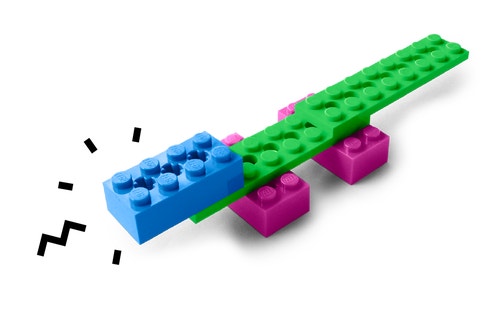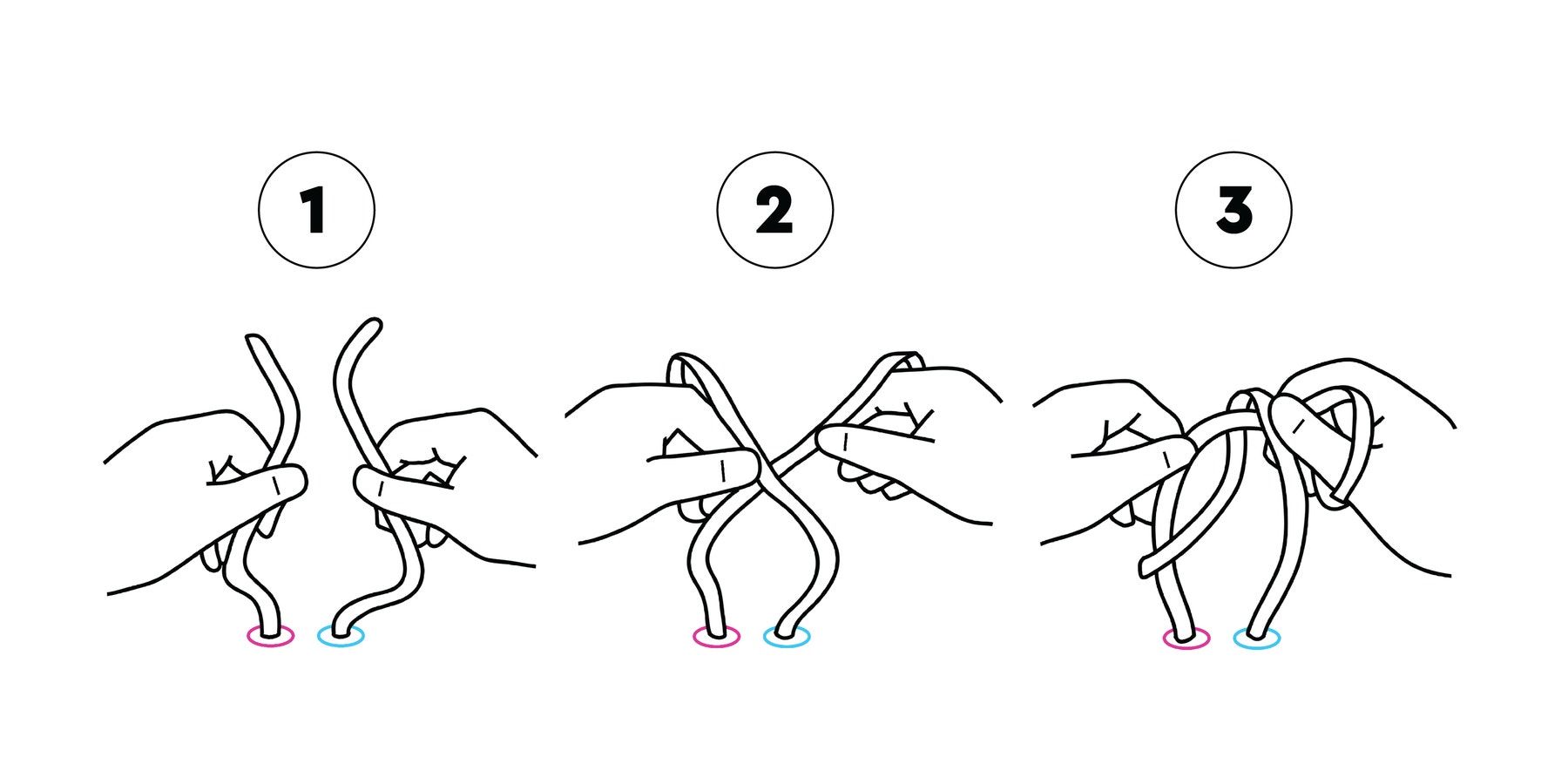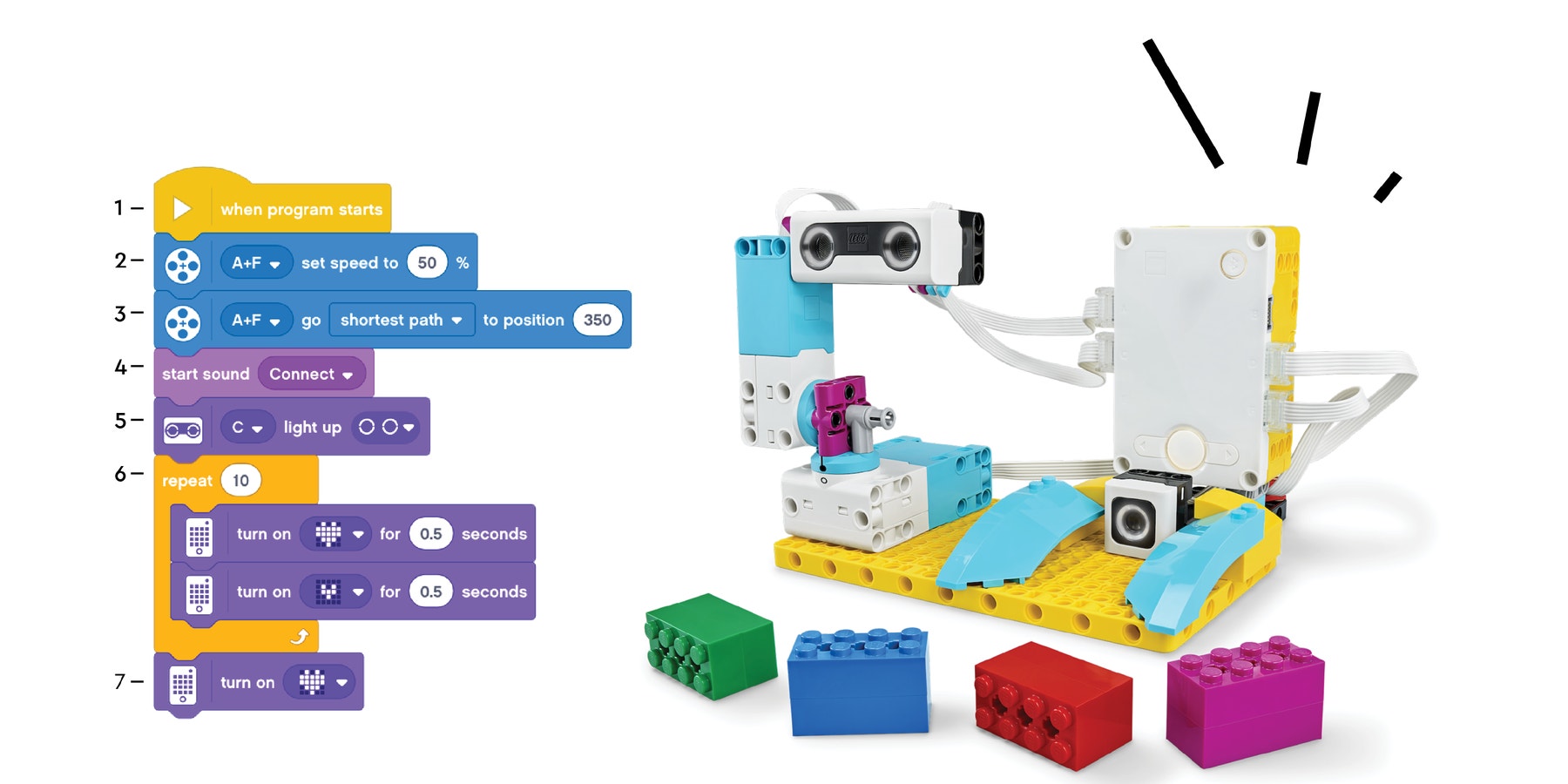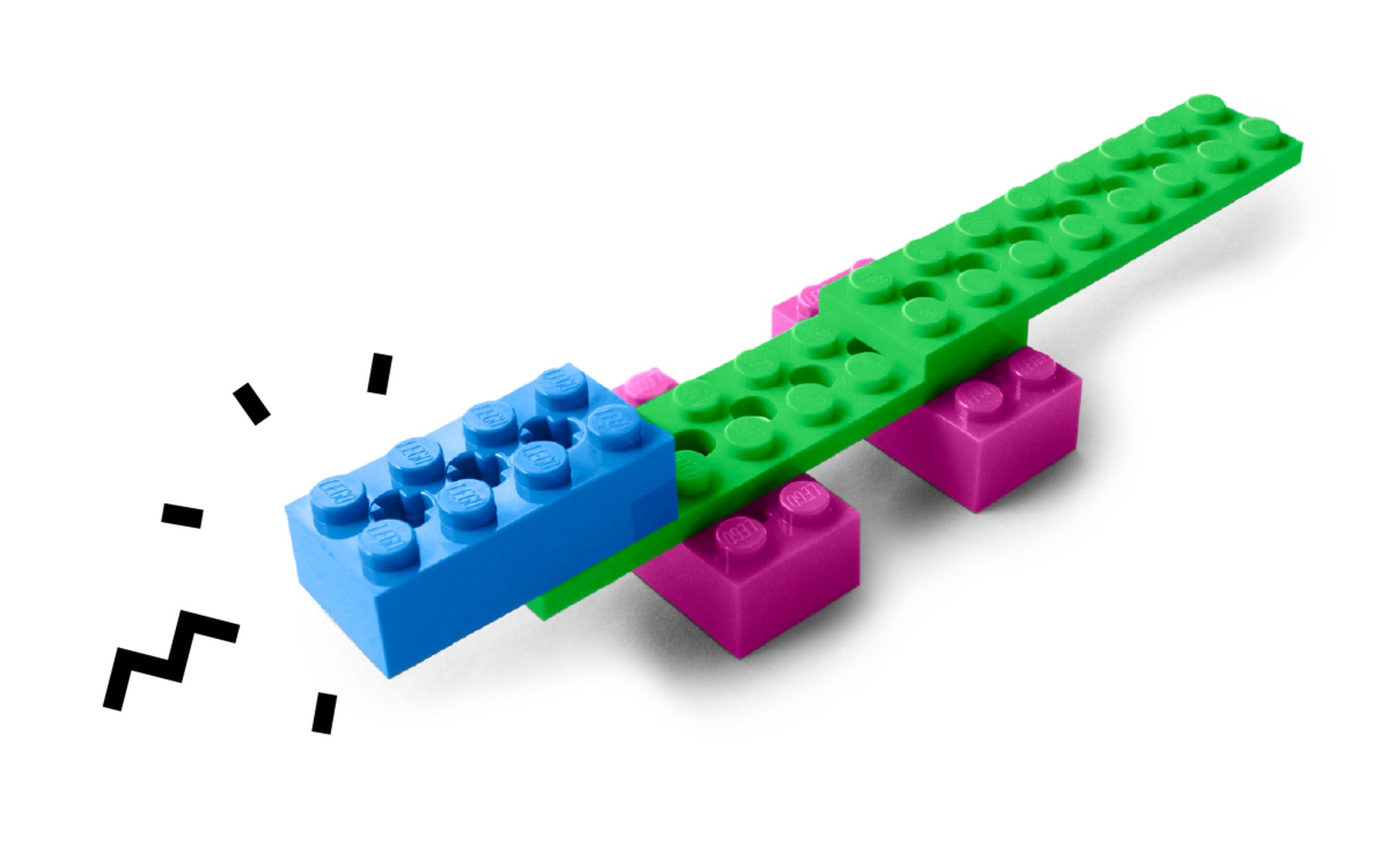Back to Back
Not all code is on a computer. Write pseudocode that tells how to build a LEGO® model!

Overview
- This lesson uses the LEGO® Education Personal Learning Kit Prime.
- In this lesson, your pupils will build a LEGO model and write pseudocode that tells how to build the model. They'll share their pseudocode with a partner.
You can teach this lesson:
- As an introductory lesson, to kick off the Kickstart a Business unit.
- Before or after the Place Your Order or Out of Order lessons, to introduce or reinforce how to write pseudocode.
- Before the Automate It! lesson, to help lay the foundation for the open-ended project.
- At the end of the unit to extend your pupils' learning.
- The Personal Learning Kit (PLK) is a take-home kit. Please follow your school’s distribution policy.
- A visual Lesson Presentation is provided in the Additional Resources section of this lesson plan. Use this presentation to pace your lesson and guide your pupils through each of the 5 Es.
Coding Concepts
- Algorithm: A step-by-step set of instructions for completing a task.
- Bug: A coding error. Debugging is the process of fixing the error.
- Decomposition: Breaking down code into smaller parts or smaller problems.
- Pseudocode: A written plan outlining the steps in an algorithm before it's coded on a computer. Pseudocode helps programmers identify and anticipate problems (bugs) and plan for breaking down (decomposing) code steps.
Engage
(10 Minutes)
Facilitate a quick discussion with your pupils to uncover their background knowledge of code.
- Through this discussion, you and your pupils will develop shared definitions of code and coding.
Ask questions like these:
- What is code? (Sample responses: something that's used to tell a machine or robot how to accomplish a task, or something fun or creative like programming a game on a computer.)
- Have you heard of any other words for code? (Pupils who are familiar with coding might share the words, "algorithm, pseudocode, and bugs." Have pupils who are familiar with these concepts share their knowledge.)
- What does code look like? (Sample responses: blocks, text, numbers.)
Continue the conversation to discuss the purpose of clear instructions. Use talking points like these:
- Code can be a set of directions. Let’s code our morning routines! What would that code look like? What do you do when you first wake up in the morning? (Sample responses: shut off the alarm, get out of bed, get dressed, eat breakfast, brush teeth, etc.)
- What are the characteristics of an ideal set of directions? (Sample responses: clear, organised, in the right order.)
Display the first Engage page of the Lesson Presentation.
- This page shows a visual set of directions for tying shoelaces.

Continue the discussion with questions like these:
- How is this code? (Sample responses: it’s telling you what to do, it’s a set of directions)
- How are these directions helpful? (Sample response: the numbers tell you what order to do things in.)
- What are the characteristics of an ideal set of directions? (Sample responses: clear, organised, in the right order.)
Display the second Engage page of the Lesson Presentation.
- This page shows an example of LEGO Education SPIKE™ Prime code from the Place your Order lesson, which is part of the Kickstart a Business unit. This programming stack controls the "quality check" robot.

Continue the discussion using talking points like these:
- This is the programming stack for the "quality check" robot. This program will “power up” the robot.
- What's the code telling the robot to do? (The steps are written as pseudocode below.)
- Tell your pupils that by explaining the code in their own words, they've just practiced making an algorithm and have prepared themselves to write pseudocode.
- The program starts.
- Motors A and F set the speed to 50%.
- Motors A and F move to 350 degrees and move there via the shortest path.
- Once the motors have moved into place, the "Connect" sound is played.
- The Distance Sensor lights up.
- The Light Matrix flashes a heartbeat 10 times.
- The Light Matrix displays a steady heart image.
Hybrid Learning Tips for the Engage Phase
Synchronous
- Facilitate a whole-class virtual discussion during your scheduled lesson time. Keep your talking to a minimum. Encourage your pupils to answer or pose questions of their own. Try using an online polling tool or chat function to get everyone participating.
Asynchronous
- Display the Engage pages of the Lesson Presentation, and choose whether your pupils should respond directly to you individually or collectively on a class discussion board. Online discussion boards are a great way to encourage peer-to-peer engagement without requiring all pupils to be present at the same time.
Explore
(15 Minutes)
- Ask your pupils to open their Personal Learning Kits and explore the bricks.
- There aren't any building instructions. Encourage your pupils to select five bricks and build a model of an animal. They can use this LEGO duck model for inspiration.

Tell your pupils to use the Explore page of the Lesson Presentation to guide them through the challenge.
In this challenge, they'll:
Build: Design a LEGO animal for someone else to build. They should use 5 bricks or fewer.
Code: Ask your pupils to write down the steps needed to build their models. Explain that this will be their pseudocode.
Program: Have your pupils work in pairs. Explain that partner 1 will share their pseudocode with partner 2. Partner 2 must follow partner 1’s pseudocode exactly as they've heard it. Then, have them switch roles.
You can also try role-playing this activity as a class. Ask all of your pupils to write pseudocode for building a LEGO model, and then have them take turns sharing their pseudocode while the rest of the class tries to follow along and build the model.
Hybrid Learning Tips for the Explore Phase
Make this a social time. Pupils enjoy building with a community.
Synchronous
- If your pupils are participating online, they can build together in one meeting room as a whole-class activity with one pupil sharing pseudocode for the rest of the class. Alternatively, have them build in small groups in breakout rooms and then share their pseudocode within their small groups.
Asynchronous
- With family help, encourage your pupils to create a designated workspace for at-home activities. A well-lit, flat, clean surface free of clutter makes an optimal building and testing surface. Please keep in mind that every pupil’s home situation will be different.
Explain
(10 Minutes)
- Once your pupils have completed the building and coding challenge, have them share their experiences with a partner.
- The Explain page of the Lesson Presentation provides conversation prompts to help pupils give and receive feedback.
- Remind your pupils to use eye contact, a friendly tone of voice, and to focus on specific examples when giving feedback. Encourage them to reflect on how they can improve their inventions based on the feedback they receive.
Here are some suggested prompts for giving feedback:
- I’m really impressed with…
- I’d like to know more about…
- I had the same idea…
- I had a different idea…
- I suggest…
Here are some suggested prompts for receiving feedback:
- Which instructions were clear?
- What can I improve?
- What bugs can be fixed?
After your pupils have shared feedback, ask them to explain how this activity is like programming.
Ask questions like these:
- How is this activity like programming? (Sample response: We're writing directions for someone to follow, just like you write code for a computer to follow.)
- Why write pseudocode? (Sample responses: to help you plan your code before you write it on the computer so you can anticipate potential bugs.)
- What details in pseudocode are important to keep in mind? (Sample responses: the importance of detail, the steps being in the right order.)
Hybrid Learning Tips for the Explain Phase
Synchronous
- If your pupils are participating online, review the feedback conversation prompts on the Explain page of the Lesson Presentation, and have them give and receive feedback in small groups in breakout rooms.
- Visit the breakout rooms to check for pupil understanding by having each group share a specific piece of feedback.
- Answer your pupils’ questions and directly address misconceptions to develop a deeper understanding of the concept at hand.
Asynchronous
- Encourage your pupils to reflect on their feedback by sharing back with the whole group or by posting a comment in the group chat.
Elaborate
(5 Minutes)
- Ask your pupils to brainstorm how they could try this activity again using a different LEGO model.
- Show them the inspiration models on the Elaborate page of the Lesson Presentation.

Ask questions like these:
- How would you do this activity again using a new LEGO model?
- How would you improve your pseudocode?
- Which instructions can be grouped together?
- How can you make your program easy to follow?
You may only have time to create new model designs and pseudocode instructions. If so, save the role-playing part of the activity for a future class session.
Hybrid Learning Tips for the Elaborate Phase
Synchronous
- Host a scheduled online sharing session in which your pupils share how they might revise their solutions.
Asynchronous
- Set up a virtual gallery walk where your pupils can share their work. Encourage them to post pictures and videos of their work and check out their peers' work.
Evaluate
(5 Minutes)
- Invite each pupil to share an example of how their pseudocode showed step-by-step instructions (i.e., their algorithm), and show an example of where they identified and fixed a problem in the pseudocode.
Ask your pupils to raise a coloured brick to self-evaluate their performance:
- Red brick: With some help, I can write pseudocode and debug a program.
- Yellow brick: I can explain how to write pseudocode and debug a program.
- Green brick: I can teach others how to write pseudocode and debug a program.
Hybrid Learning Tips for the Evaluate Phase
You have many options for assessment – a written assignment, a live or recorded oral presentation, or a drawing that demonstrates your pupils' understanding.
Synchronous
- Facilitate a whole-class virtual discussion during your scheduled lesson time.
Asynchronous
- Have your pupils reflect on their work by posting a written assignment, a live or recorded oral presentation, or a drawing that demonstrates their understanding.
Teacher Support
Pupils will:
- Create and follow a set of step-by-step pseudocode instructions
- Decompose, identify, and fix problems in the pseudocode
- LEGO® Education Personal Learning Kit Prime (1 per pupil) or other LEGO bricks or chosen materials for each pupil
- Lesson Presentation (see Additional Resources)
- Paper (2 pieces per pupil)
- Writing/drawing material (pen, pencils, markers)




